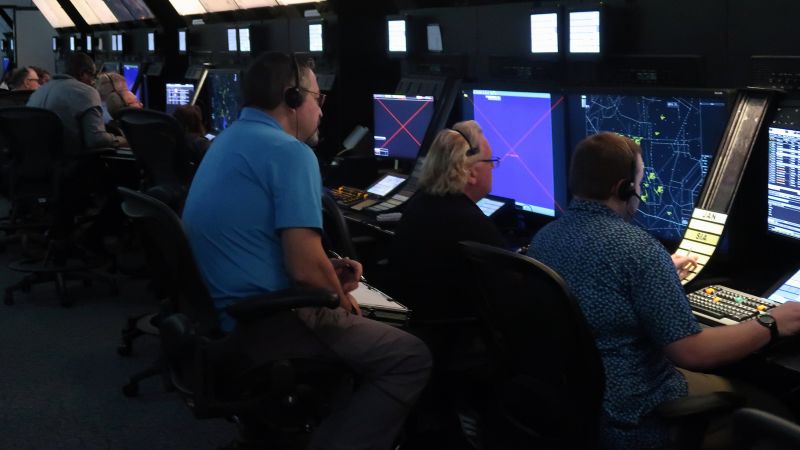A significant expansion at the Federal Aviation Administration (FAA) Academy in Oklahoma City is addressing a critical shortage of air traffic controllers. The academy, a vital training facility since its establishment in 1946, is ramping up its efforts to prepare the next generation of controllers who will manage the nation’s skies, which see over 85,000 flights daily.
Located near the Oklahoma City airport on a sprawling 1,100-acre campus, the FAA Academy has seen a surge in enrollment. By the end of July 2023, there were 550 students in training, the highest number recorded to date. This expansion comes in response to an urgent need for over 3,000 controllers nationwide, a gap that has persisted for decades. According to FAA Vice President for Mission Support, Chris Wilbanks, the academy serves as a crucial introduction to the field, guiding students through a structured training process that gradually increases in complexity.
In January 2023, a tragic midair collision involving an American Airlines regional jet and an Army Blackhawk helicopter, which resulted in 67 fatalities, prompted the Department of Transportation to accelerate efforts to bolster the air traffic control workforce. In response, the FAA has increased salaries for trainees by 30% and streamlined the hiring process, reducing the timeline by four months. The academy is now training approximately 800 to 1,000 more students compared to the previous year.
Before entering the academy, potential candidates undergo a rigorous selection process that includes an aptitude test, medical and background checks. Earlier this year, 8,320 candidates were referred for the required exam, yet typically, only 10% succeed in gaining admission, with 35% of those who do ultimately dropping out. New controllers must be under the age of 31, resulting in a youthful atmosphere on campus, reminiscent of a small college.
Students begin their training with tabletop exercises using small model planes and painted runways to master the language of air traffic control. These early lessons are vital for developing a clear understanding of airport layouts and efficient communication. “If you don’t know where the aircraft is when he calls you, you’re already behind the game,” Wilbanks noted, emphasizing the importance of situational awareness.
Once students progress from tabletop training, they participate in lifelike tower simulations. These simulations replicate a real airport environment, complete with virtual airplanes and runway sequences. As trainees don headsets and take on the role of air traffic controllers, they issue commands such as, “FedEx 2285 heavy, Academy Tower, hold short runway 28, right.”
Instructors like Eric Wedel, who has been an academy instructor since 2017 and previously served as a controller for 28 years, highlight the immense pressure of the role. Trainees must learn to observe not only radar data but also the visual aspects of aircraft movement. “Radar is an extension of the eyeballs,” Wedel explained, stressing that while simulations can mimic weather conditions, they cannot replicate every nuance of real-life scenarios.
In addition to tower training, students also prepare for radar control, where they manage air traffic from a distance, often far from the aircraft they are directing. Here, they practice responding to emergencies and monitoring various factors that could disrupt flights. “It is a tremendous amount of pressure,” Wilbanks remarked, reflecting on the intensity of the training experience.
Graduates from the FAA Academy are then assigned to towers and radar centers across the country, where additional training continues for one to three years before they achieve certification as professional controllers. Once certified, these controllers can earn an average salary of $160,000 annually after three years in the field. The FAA has also implemented policies encouraging controllers nearing the mandatory retirement age of 56 to remain in their positions to help bridge the staffing gap.
While it may take years to fully address the staffing shortage, the FAA Academy remains committed to nurturing the next generation of air traffic controllers. As Wedel aptly summarized, “Every day is different,” embodying the dynamic nature of this critical profession.
